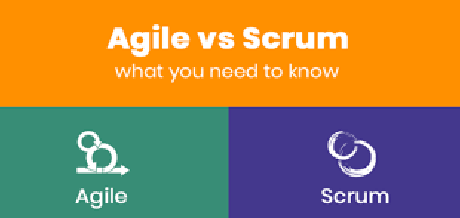Agile and Scrum are two of the most prominent players, each offering distinct advantages. As you embark on your DevOps journey, understanding the differences between Agile and Scrum can significantly impact your success.
Agile Development – Flexibility at its Core
Agile development is a philosophy that emphasizes adaptability, customer collaboration, and continuous improvement. It’s like a flexible framework that allows teams to pivot, iterate, and deliver value in small increments. With Agile, you’re not bound by rigid plans; instead, you respond to change and customer feedback, ensuring your end product meets their evolving needs.
Scrum – A Specific Agile Methodology
Scrum, on the other hand, is a specific Agile methodology that provides a structured framework for managing complex projects. It introduces roles like Scrum Master, Product Owner, and Development Team, along with events like Sprint Planning, Daily Standup, Sprint Review, and Sprint Retrospective. Scrum’s focus is on delivering a potentially shippable product increment at the end of each sprint.
Choosing for Your DevOps Goals:
DevOps Alignment:
If your DevOps goals involve fostering collaboration and communication between development and operations teams, both Agile and Scrum can be effective. However, Scrum’s structured roles and events can facilitate smoother collaboration in this context.
Flexibility vs. Structure:
Consider your team’s preferred working style. Agile offers more flexibility, allowing teams to adapt quickly to changes. Scrum provides a defined structure that can be beneficial for teams seeking clear roles and responsibilities.
Project Complexity:
For larger, complex projects, Scrum’s well-defined roles and ceremonies can help manage intricacies effectively. Agile’s adaptable nature might be better suited for smaller projects.
Customer Involvement:
Agile’s philosophy places a strong emphasis on involving customers throughout the development process. If customer collaboration is a top priority, Agile might be the better choice.
Iterative Progress:
Both Agile and Scrum emphasize iterative development, but Scrum’s time-bound sprints offer more predictable deliverables at regular intervals.
Team Expertise:
Consider the expertise and experience of your team. Agile might require a more self-organized team, while Scrum provides defined roles that can be suitable for less experienced teams.
